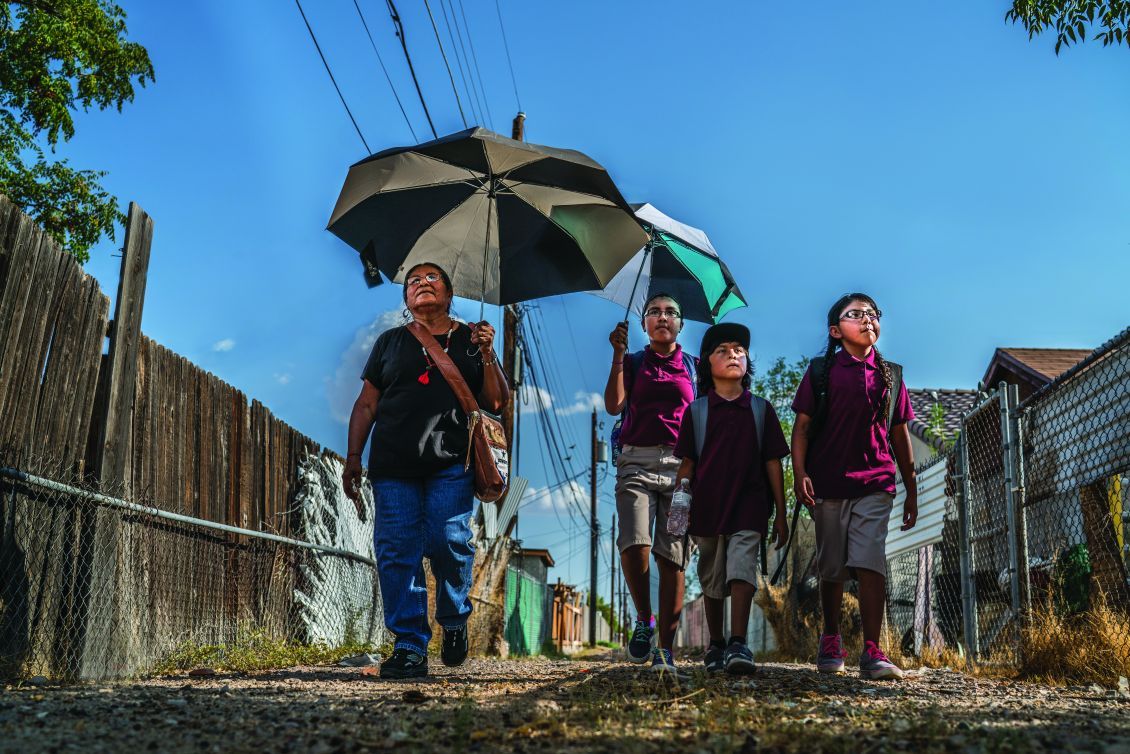Every year, extreme heat kills more people in the U.S. than other natural disasters combined. This year has brought little relief so far, with temperatures soaring in all corners of the country. In addition to harming health, extreme heat exponentially increases the cost of health care, utility bills, food, and water. Addressing extreme heat can seem overwhelming, but by following some key strategies, government workers and grassroots leaders can respond now and effectively plan for the future.
With support from HUD’s Community Compass Funding, Enterprise Advisors, in partnership with Arcadis, developed the Extreme Heat Quick Guide to enhance the capacity of HUD grantees and community partners to collaborate to develop strategies to address extreme heat, while protecting the health and wealth of their communities.
In the guide we explore five ways to address extreme heat:
- Educate: Launch campaigns to raise awareness about the risks of extreme heat and how to stay safe. Make information accessible to each population segment, by establishing a multilingual hotline and conducting neighborhood meetings to provide information and support during extreme heat events. Partner with organizations working on the ground to launch campaigns to address extreme heat, illustrating the dangers to individuals and families and ways to protect themselves.
- Respond Proactively: Identify high-priority areas for emergency short-term cooling centers in public buildings like schools, libraries, and community centers, and work with cooling spaces in public housing. Be the first to lead the charge to address extreme heat, starting with making public buildings available, creating emergency response plans, and organizing public servants to implement high quality customer service practices to protect the individual and families.
- Distribute Air Conditioners: Implement programs for distributing air conditioners to vulnerable populations to ensure access to cooling. Make air conditioner units available for people who cannot get to cooling centers along with helping with cost of energy bills, particularly during peak heat periods.
- Protect Workers: Advocate for and implement higher labor standards to protect workers from the risks associated with extreme heat. Work with large employers to ensure workers’ health is prioritized, by enforcing employers’ legal responsibility to, at a minimum, provide water, rest and shade. Work with advocacy organizations working on the ground to ensure workers have all the support they need to successfully negotiate water breaks.
- Develop Long-Term Strategies: Retrofit older buildings, map and invest in areas that would benefit most from green space, utilize permeable surfaces to help reduce heat, and offer incentives for clean energy adoption. Invest in green infrastructure, such as passive ventilation, heat pumps, screened windows, and materials more resilient to high temperatures. Implement landscaping that is heat tolerant and includes low-water species. Design and implement policies that offer incentives for clean energy adoption and retrofits. Finally, educate, advocate and organize your community to successfully address extreme heat in the short-, medium- and long-term.
A comprehensive list of these and additional strategies will be published in an Extreme Heat Playbook in September 2024. This playbook will detail these strategies under approaches to address extreme heat at different scales – from support of personal and family preparedness to community to state-level policy interventions – as well as providing information on funding opportunities and resources.
In the meantime, more information about extreme heat can be found by visiting HUD Exchange Resources under Extreme Heat, the National Integrated Heat Health Information System Resources under tools and information, and Extreme Heat Resources.
Enterprise Advisors is the mission-based consultancy of Enterprise Community Partners.
